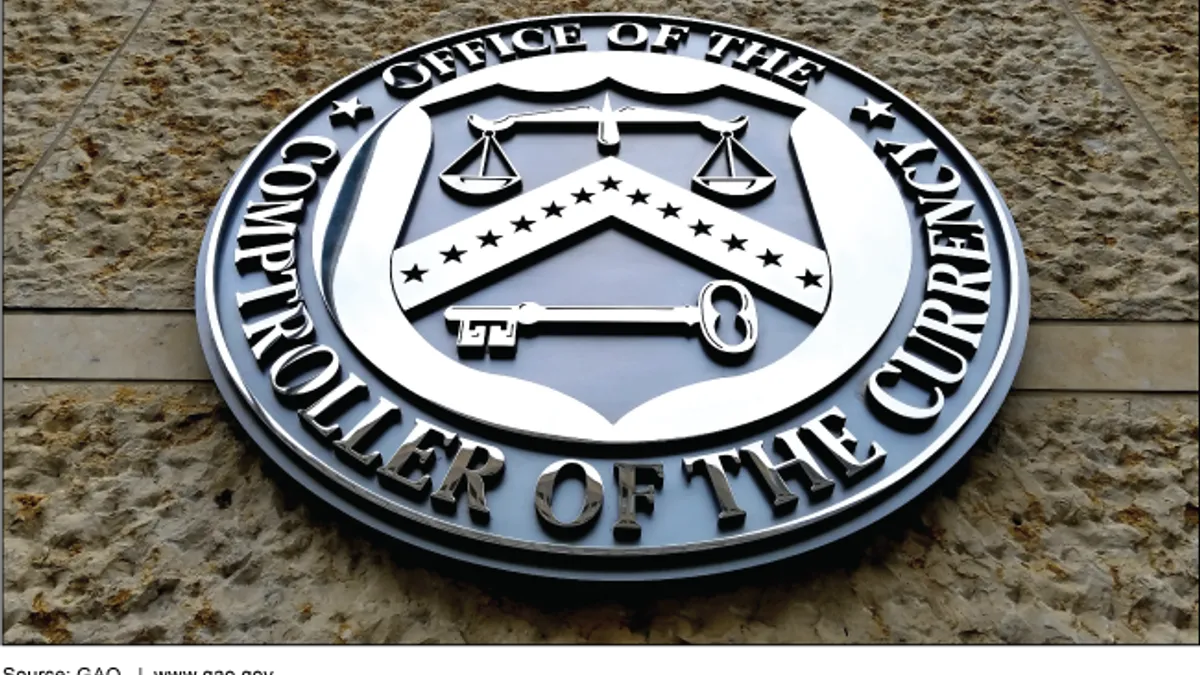A key metric regulators use to determine market competitiveness in the bank merger review process may be growing irrelevant amid the growth of digital banking and nonbanks, an Office of the Comptroller of the Currency official said in a speech Friday.
The Herfindahl-Hirschman Index, which regulators use to assess market concentration before and after mergers, is a “transparent, empirically proven, efficient, and easily understood measure of concentration,” Ben McDonough, the OCC’s senior deputy comptroller and chief counsel, said at the opening of the agency’s Bank Merger Symposium.
But the index, which measures a bank’s market presence based on deposit share, is becoming a less effective predictor of competition across product lines amid the growth in mobile banking and nonbank entities, and may have become less relevant since bank merger guidelines were last updated in 1995, McDonough said.
“This is so because a bank’s deposit base may have become less probative of its offering of other banking products. In addition, the size of the relevant markets for these products may have expanded exponentially with the rise of online banking products and services, while nonbank competitors have grown to an extent unimagined in 1995,” said McDonough, who delivered the event’s opening remarks on behalf of Acting Comptroller Michael Hsu, who was unable to attend.
McDonough is not the only regulator to propose a de-emphasis on the Herfindahl-Hirschman Index. Federal Reserve Gov. Michelle Bowman, in a September speech, recommended relaxing the HHI thresholds in bank merger guidelines to reflect the influx of nonbank competition.
Looser HHI restrictions may benefit struggling rural community banks that may be forced to seek a merger with an out-of-market partner because combining with another local community bank would drive up a merger’s concentration score, Bowman said.
Hsu, who took the helm of the OCC in May 2021, has long called for bank merger reform, referring to the factors and analytical frameworks regulators use to assess mergers as dated.
During a speech at the Brookings Institution last year, Hsu said the OCC is working with the Justice Department and fellow bank regulators to review its merger framework.
“Without enhancements, there is an increased risk of approving mergers that diminish competition, hurt communities or present systemic risks,” McDonough said Friday.
However, a moratorium on mergers could be equally harmful, McDonough said.
“[A] moratorium on mergers would lock in the status quo and inhibit growth and improvements that could help communities and increase competition,” he said. “We need to build a better mousetrap so that healthy mergers get approved while unhealthy mergers get rejected. Importantly, this mousetrap needs to be not only theoretically sound and consistent with our values, but also capable of implementation within the statutory criteria for merger review.”
The Biden administration has zeroed in on consolidation in banking, issuing a July 2021 executive order demanding “more robust scrutiny” of mergers.
“Though subject to federal review, federal agencies have not formally denied a bank merger application in more than 15 years,” the Biden administration said at the time.
The OCC has yet to publish a request for information on the topic, but the Federal Deposit Insurance Corp. submitted one in March.
Months earlier, two Democratic members of the FDIC board published a review of bank merger policies without the approval of the regulator’s then-chief, Jelena McWilliams, a Trump appointee.
The move sparked partisan arguments about bank mergers and acquisitions, as well as the rules binding the agenda-setting mechanism of the FDIC.
McWilliams resigned Dec. 31, 2021.












